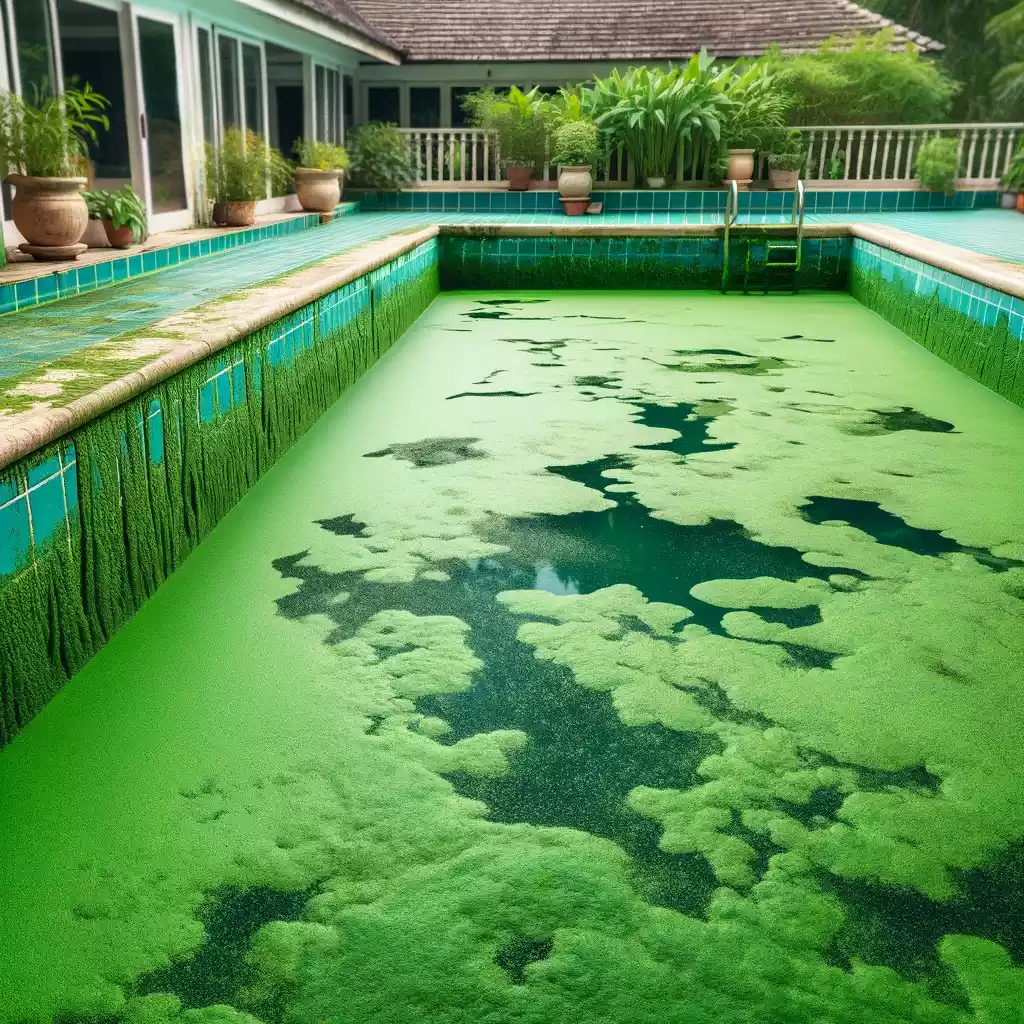Algaecides can prevent the growth of algae, especially by inhibiting the metabolism of most microorganisms that occurs through respiration. Therefore, blocking respiration can stop the growth of bacteria. Additionally, algaecides can also remove algae from the water, ensuring a high chlorine level in the water body, thereby effectively inhibiting the growth and reproduction of algae.

When using algaecides, it is essential to pay attention to the dosage and method of application. Overuse may harm health. Therefore, when adding algaecides, it is advisable to use one-third of the recommended dosage. This approach not only meets the needs of water maintenance but also prevents harm to the human body. Each product has different instructions, so it is crucial to read the manual carefully and follow the guidelines.
Algaecides generally act quickly, rapidly inhibiting the growth and spread of algal cells. The speed of effectiveness depends on the type and quantity of the algaecide used, with some lasting for several hours. Quick and effective measures can accelerate the restoration of water quality. The closing period of a swimming pool is determined by several factors, such as the type, quantity, and condition of the water.
After adding algaecides, a period of 6-24 hours is usually recommended to ensure they have sufficient time to take effect. During this time, it is best to avoid swimming in the pool to prevent danger due to the water quality not being fully restored. Before deciding when to reopen the swimming pool, conducting a water test is very important. Use water treatment devices to measure chemical parameters, such as chloride concentration, pH value, and alkalinity. Ensure the water quality meets safety requirements, providing visitors with a clear, hygienic, and safe swimming environment. Water quality testing can help us determine the effectiveness of algaecides in inhibiting the production of water algae and making the pool comfortable again.
Safety Advice for Swimming
A. Remove Residual Algaecides
To prevent swimmers’ skin from direct contact with chemical substances that have not been fully decomposed, all residual algaecidal substances in the pool must be removed. Use appropriate tools, such as filters, skimmers, or vacuum tanks, to remove algae from the water. Regularly check the water quality to ensure no residues remain.
B. Clean the Pool Surface
Maintaining the cleanliness of the pool surface is a crucial step in maintaining water quality and ensuring the comfort of swimmers. Regularly clean the pool walls, bottom, and pipes using suitable cleaning tools, such as brushes or vacuums, to prevent the accumulation of algae, bacteria, dust, etc. Keep the area around the pool clean to avoid contamination from dust, fallen leaves, debris, and other pollutants.
C. Pre-Swim Check
To ensure the safety of the swimming pool, conduct several necessary tests before swimming. Check water quality indicators, such as chlorine ion concentration, pH, and alkalinity, and ensure they are within appropriate ranges. Check whether the pool filter and pump are functioning well. Pay attention to sharp edges or damaged areas on the pool edges and steps to avoid injuring swimmers.
Therefore, correctly maintaining pool water quality and applying algaecides appropriately are key to ensuring a safe and enjoyable swimming experience for visitors. Regular testing and maintenance are crucial for maintaining water quality. By following these points, water-related issues can be minimized.
 Instant
Quote
Instant
Quote Email
Us
Email
Us